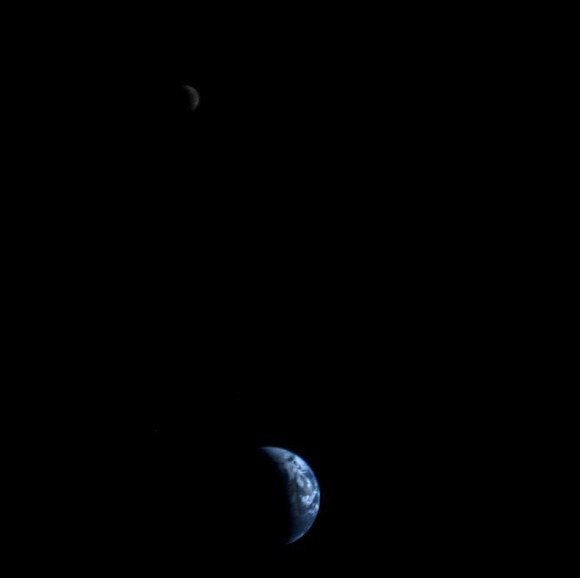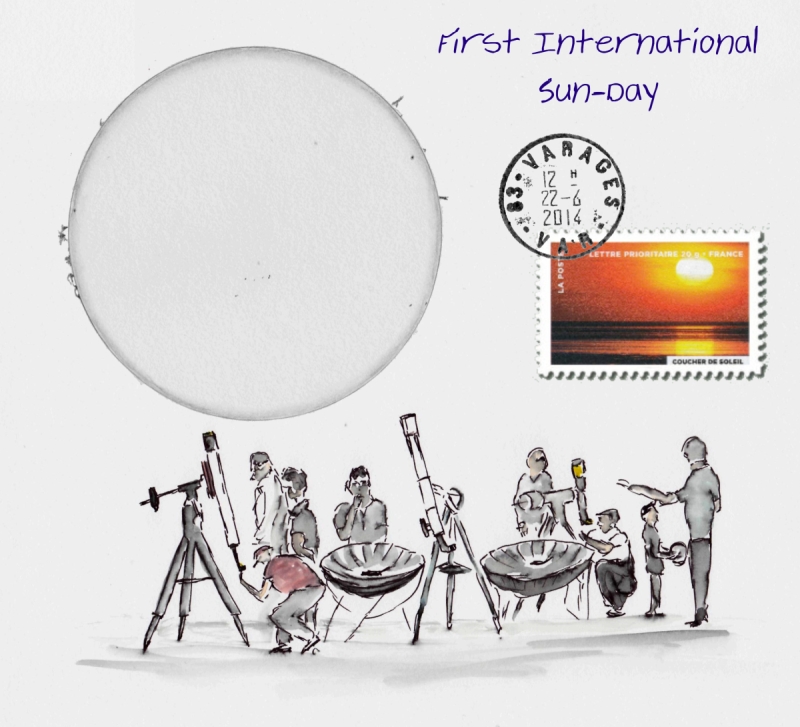http://io9.com/a-5-year-old-worries-voyager-will-get-lonely-receives-1639256314
All together now on three …
1 … 2 … 3 …
“Ah!”
Dialing back the cuteness entered now.
Enjoy!
Sunsets, Stars, West, Wind
http://io9.com/a-5-year-old-worries-voyager-will-get-lonely-receives-1639256314
All together now on three …
1 … 2 … 3 …
“Ah!”
Dialing back the cuteness entered now.
Enjoy!
http://earthsky.org/space/this-date-in-science-sept-18-1977-voyager-1-earth-moon-photo

37 years ago today.
Voyager to Earth: “Hello World!” or more likely “Goodbye World!”
Voyager is still sending us postcards from the edge though.
http://io9.com/the-seven-wonders-of-the-solar-system-1600220388
Some suggestions for a superlative list of solar system wonders.
My list off the top of my head:
1. Saturn’s rings
2. Jupiter’s red spot
3. Mars’ Olympic Mons
4. Io
5. Titan
6. Uranus for being axially contrary
7. Oort cloud
Posted from WordPress for Android via my Samsung smartphone. Please excuse any misspellings. Ciao, Jon
Big solar storm heading toward Earth
http://www.cnn.com/2014/09/11/tech/innovation/solar-storm/
Should be here Saturday. Keep a flashlight handy.

For once, I live in just about the best spot to observe a total solar eclipse. The center line for the eclipse coming in August 2017 is just a few miles north of where I live. That being said, the path of the eclipse cuts diagonally across the United States from Oregon to South Carolina.
Update Monday 9/1/2014: I forgot to include a link to the Astronomy magazine article that will take you to the interactive map shown above: Make Plans for the 2017 Eclipse with This Great Map. Continue reading “Less Than Three Years to Prepare”
I thought I’d use the European racing term more commonly known in the States as ‘passing’ to refer to the progress Venus has made in the predawn sky this past week.
Saturday morning I woke up way too early for a weekend, but remembered reading something about Venus and Jupiter getting closer together. Without reminding myself by actually looking the information up via Facebook or Twitter or Google, I threw on some clothes, grabbed the keys to one of the vehicles (didn’t care which one) and rushed outside. It was still very dark, just after five o’clock (Central time zone). I drove a block up a slight hill to my favorite eastern horizon viewing site (just to the east of Lansing City Hall) and waited … and waited … and waited. I finally used my smartphone (which I never leave home without) to check when Venus and Jupiter were supposed to rise (using Astronomy.com’s Tonight’s Sky mobile web page). Continue reading “Venus Overtakes Jupiter”
http://earthsky.org/tonight/closest-planetplanet-conjunction-before-sunrise-august-18
Set your alarms folks! This will be all kinds of cool tomorrow morning.
Posted from WordPress for Android via my Samsung smartphone. Please excuse any misspellings. Ciao, Jon
Google Just Added Maps For Mars And The Moon, And The Level Of Detail Is Stunning
I wonder how long before Mercury will be added to the list? Or perhaps the moons of Jupiter and Saturn.
Posted from WordPress for Android via my Samsung smartphone. Please excuse any misspellings. Ciao, Jon

Yesterday, I saw a post via Sky & Telescope’s Facebook feed that reminded me to get out my telescope. This week, starting tomorrow, you don’t need a telescope to see something amazing.
Saturday after sunset, look to the south to see the Moon near Mars.
Monday, again after sunset, look a bit farther to the south-east to see the Moon near Saturn.
Here’s a link to Sky & Telescope’s article about the Moon juicing up July:
Two Moon-Planet Conjunctions Juice Up July
But back to my telescope. I know I don’t need it to see the above two events, anyone with eyeballs can observe them. I wanted to get out my telescope and shake off the cobwebs. It’s been a cloudy spring this year, at least on the weekends. I observed Mars first, trying to see the polar ice caps, then I switched to Saturn, where I clearly saw the separation between the rings and the different cloud layers. The angle of the rings with respect to Saturn is spectacular right now.
I spied a wonderful ‘postcard’ from Varages in southeastern France via the Astronomy Sketch of the Day this morning:

I especially like the foreground sketches. The sun was ‘quiet’ on Sunday.